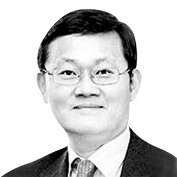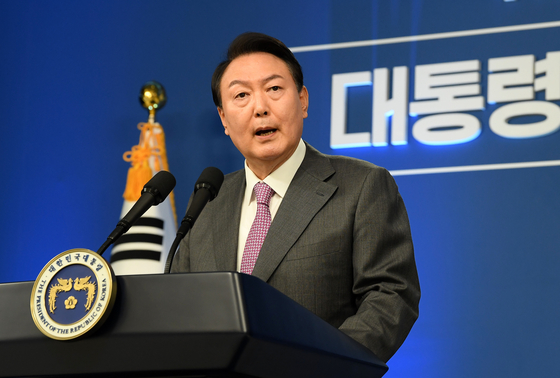What is ‘Yoononomics’?

The author, former chief economist at the Asian Development Bank and a senior adviser for international economic affairs to former President Lee Myung-bak, is a professor of economics at Korea University.
Franklin D. Roosevelt is the sole American president to win four presidential elections. Taking office during the Great Depression in 1933, he implemented New Deal agenda enabling an active government role in fighting America’s worst economic crisis. For the first 100 days, he summoned Congress to legislate the key bills backing the domestic revival agenda. They included the Emergency Banking Act, suspension of the gold standard, the Agricultural Adjustment Act, and the National Industrial Recovery Act. He went on the radio for “fireside chats” to brief the Americans about the progress in the recovery projects and the course of World War II.
Since Roosevelt, the first 100 days have become pivotal to presidents to make an impression. All U.S. presidents drove through key agenda items during the early period. Ronald Reagan pushed forward key economic policies, Reaganomics, based on four pillars of reduced government spending, tax cuts, deregulation and reducing inflation by tightening money supply. He shifted much of public policies centered on federal role to neoliberal direction to be led by the market. Reagan used his personal charm and humor to communicate with the people.
President Joe Biden, who took office in January amid serious divisiveness across the U.S. and still-threatening Covid-19 pandemic, pushed with 11 bills in his first 100 days, including $1.9 trillion stimulus package. The so-called for Bidenomics called for higher taxes on wealthy companies and individuals and expansion of green infrastructure.
The president’s first 100 days cannot be more important than the rest of the term. The president can do more meaningful work afterwards. Still, the first 100 days are the so-called honeymoon period with stronger public support and expectations with greater likelihood of cooperation with the legislature to pass key bills. People tend to pay attention to the first months to see how the new president forms the first administration, the style of managing state affairs, what policies are prioritized and whether campaign pledges are realized.
President Yoon Suk-yeol’s first 100 days have been tough. Politically, he faced an extreme ideological contest, an opposition-dominant legislature and an internally quarrelsome ruling party. A Gallup Korea poll showed the president’s approval rating skidding from 52 percent at the time of inauguration to 25 percent last week. Yoon has returned the Blue House to the public and moved his presidential office to the Ministry of National Defense building in Yongsan and regularly stopped on his way to work to speak with reporters. Yet his approval rating has continued to fall. Negative views came mostly from his appointment flops, lack of experience, unrefined communications, behaviors on duty, negligence to the economy and everyday affairs and lack of policy vision. In short, most people do not trust the Yoon administration.
The new government has set “Rejuvenated South Korea, a country where all people live well” as its governance vision. It also announced its 110-point national agenda. But people do not know what campaign promises are being realized and for what vision. There are no novel reforms in action.

The economic policy goal is to overcome low growth and promote a benign cycle on growth and welfare. Yoon’s economic team has trotted out numerous policies in the first 100 days. The measures aim to stimulate private-led dynamic growth and promote advanced industries. They included real estate taxation reform, cuts in corporate tax, regulatory reform, promotion of the chip industry, reversal of the past administration’s policy to phase out nuclear reactors and public-sector reforms. A 62 trillion won ($46.9 billion) supplementary budget passed with bipartisan agreement to compensate businesses for their losses during Covid-19. How much of the visions can help make the country and people more prosperous is uncertain. Many are pained by low growth, high prices and high debt and complain of inequality in distribution.
Last week, the Korean Economic Association held a symposium on economic policy direction and challenges for the new government. Many economists were doubtful if the government could really drive private-led economic growth. Even with advances in high tech, growth cannot gain momentum without improvements in the productivity of small and mid-sized enterprises and the service sector. Policies to enhance welfare and encourage balanced growth are lacking.
The government has been presenting various measures, but there has been no clear picture on the direction like the New Deal, Reaganomics or Bidenomics. The public must be able to have an idea on what the economy and nation would look like after five years. In the press conference marking his 100th day in office, President Yoon explained the direction of his administration’s economic policy. How he performs from now on is important.
Translation by the Korea JoongAng Daily staff.










with the Korea JoongAng Daily
To write comments, please log in to one of the accounts.
Standards Board Policy (0/250자)